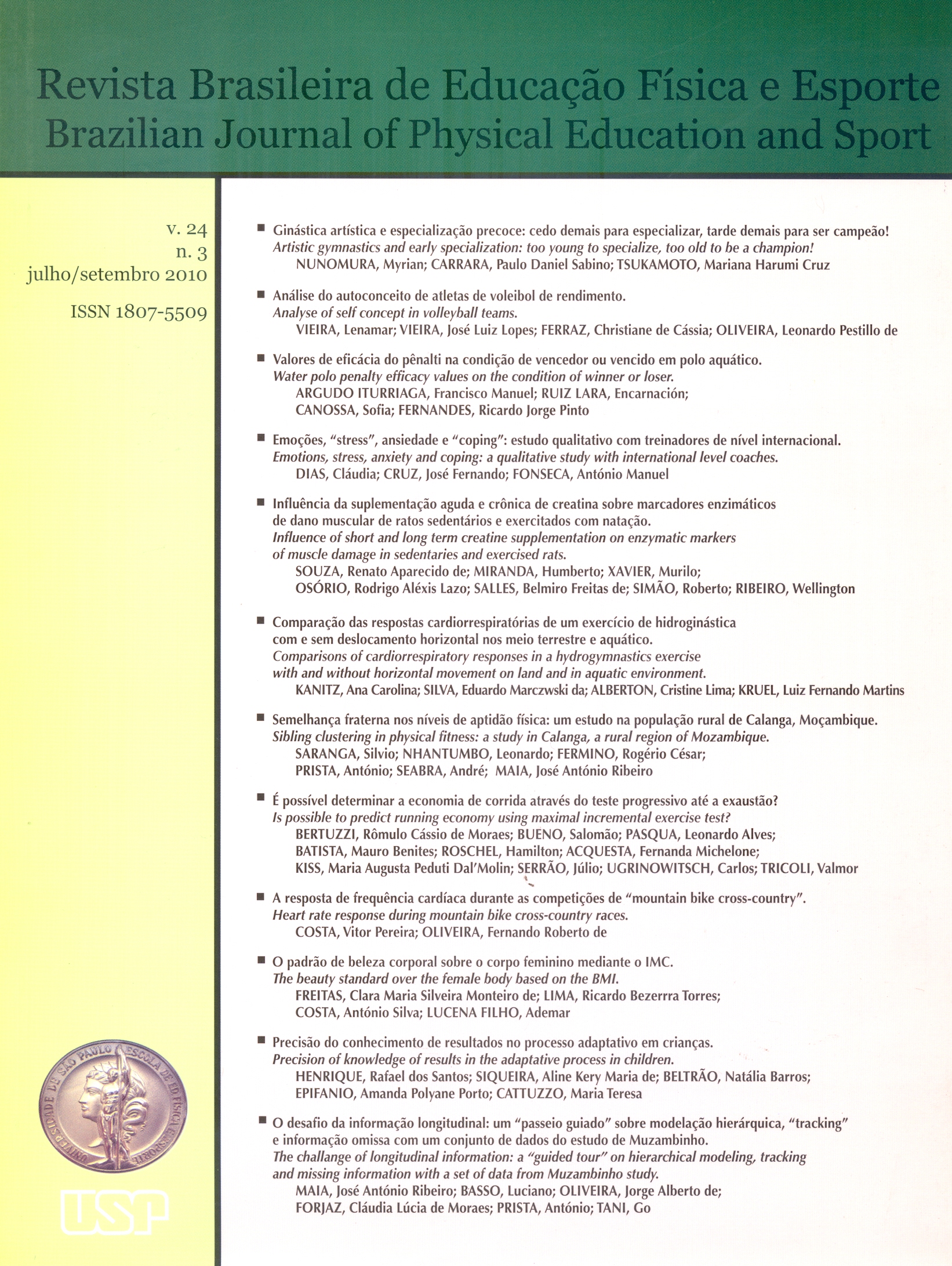Semelhança fraterna nos níveis de aptidão física: um estudo na população rural de Calanga, Moçambique
DOI:
https://doi.org/10.1590/S1807-55092010000300007Palabras clave:
Epidemiologia genética, Fratrias, Aptidão física, MoçambiqueResumen
Este estudo teve dois propósitos: 1) determinar agregação familiar em diferentes indicadores da aptidão física, e 2) a sua componente genética (h²). A amostra foi constituída por 330 sujeitos (174 meninos e 156 meninas) dos sete aos 17 anos de idade, pertencentes a 132 famílias de Calanga, uma localidade rural de Moçambique. A aptidão física foi avaliada com os seguintes testes: sentar e alcançar, impulsão horizontal, tempo de suspensão na barra, dinamometria manual, corrida da milha, abdominais e corrida vaivém (10 x 5 m). Para estimar semelhança entre irmãos foram calculadas correlações e a sua contribuição genética foi realizada pelo método da máxima verosimilhança para estimar componentes de variância. Todos os cálculos foram ajustados para a idade, sexo, idade², idade³, idade*sexo, idade²*sexo, bem como um "score" de atividade física. A análise de dados foi realizada no programa de Epidemiologia Genética SAGE. As correlações foram baixas em cada indicador de aptidão física: irmãos (entre 0,01 e 0,25), irmãs (entre -0,19 e 0,45) irmão-irmã (entre -0,02 e 0,39). A componente genética em cada item de aptidão foi a seguinte: sentar e alcançar h² = 0,41 ± 0,16, p = 0,01; impulsão horizontal h² = 0,60 ± 0,14, p = 0,001; tempo de suspensão na barra h² = 0,18 ± 0,20, p = 0,37; dinamometria manual h² = 0,19 ± 0,13, corrida da milha h² = 0,49 ± 0,14, p = 0,001; abdominais h² = 0,09 ± 0,13, p = 0,59; p = 0,16; corrida vaivém h² = 0,07 ± 0,15, p = 0,63. Conclusões: 1) a agregação familiar foi mais elevada nas irmãs do que nos irmãos do mesmo sexo e sexo oposto; 2) foram encontrados fatores genéticos moderados na flexibilidade, capacidade aeróbia e força explosiva; 3) a variância entre irmãos nos outros fenótipos foi explicada por fatores de natureza ambiental que podem estar relacionados com atividades de subsistência familiar.Descargas
Los datos de descarga aún no están disponibles.
Descargas
Publicado
2010-09-01
Número
Sección
naodefinida
Licencia
Todo o conteúdo da revista, exceto onde está identificado, está licenciado sob uma Licença Creative Commons (CC-BY)
Cómo citar
Saranga, S., Nhantumbo, L., Fermino, R. C., Prista, A., Seabra, A., & Maia, J. A. R. (2010). Semelhança fraterna nos níveis de aptidão física: um estudo na população rural de Calanga, Moçambique . Revista Brasileira De Educação Física E Esporte, 24(3), 363-372. https://doi.org/10.1590/S1807-55092010000300007


